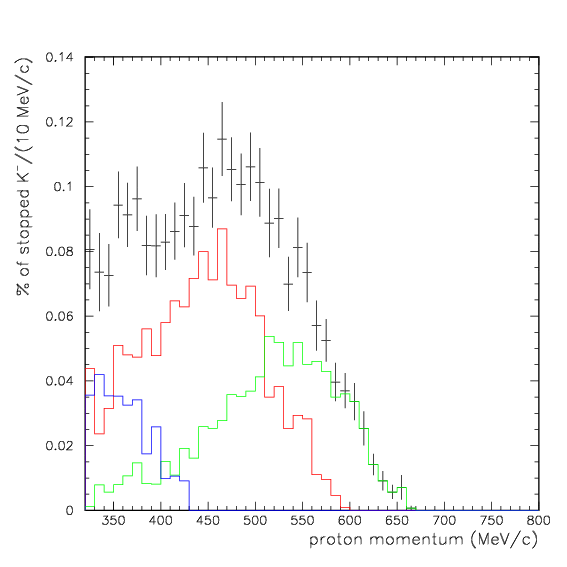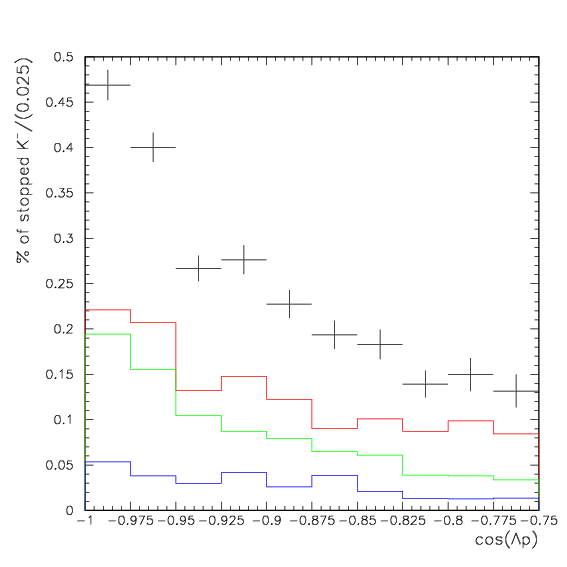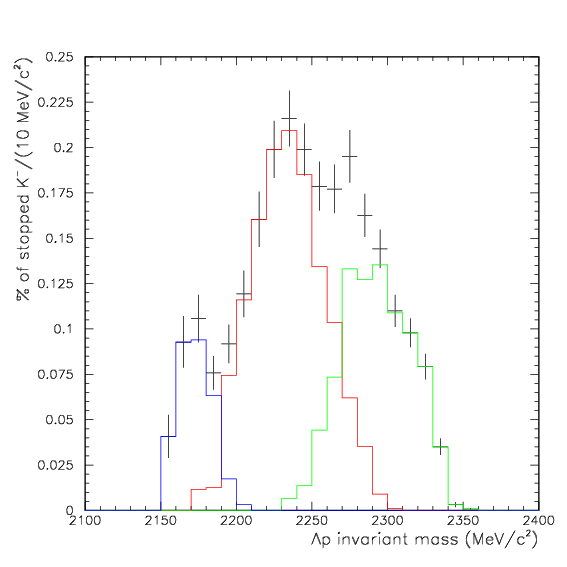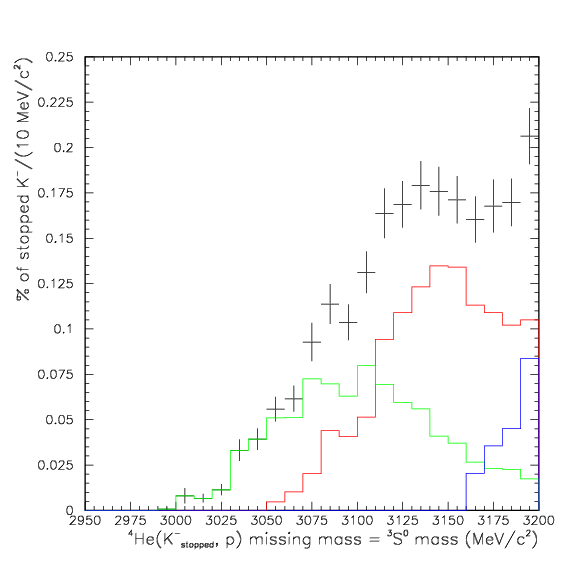Here, we present normalized Λp spectrum by generalized acceptance discussed in the 2009 Aug 18th report for back-to-back events (case1-180deg). First of all, we present the summary of total numbers of Λp events. Since we have updated the proton selection procedure after 2007 June 11th report at 2007 July 11th report, we compare the event number cycle-by-cycle as the first step, for the case1 topology.
| YN pair(dibaryon/tribaryon channel) | case ID(Selection) | Angler acceptance (cos(ΛN)) | PA/PB/NT particle | TC particle | No. of reconstructed &Lambda | No. of event after selection A | yield of well-defined &Lambda N pair |
|---|---|---|---|---|---|---|---|
| &Lambda p (X+/S0) | 1(A-b-1-x) | (-1,-0.7) | p + p | &pi | 1415(1329)/1380(1294)/549(514) | 1352(1271)/1339(1256)/525(494) | 1352+1339+525=3216 "1241+1339+496=3076" |
| &Lambda p (X+/S0) | 1(A-b-x-1') | (-0.9,0.9) | p | &pi + p | 1250(1217)/1208(1186)/498(490) | 966(937)/935(916)/384(379) | 966+935+384=2285 "910+935+376=2221" |
| &Lambda n (X0/S+) | 1(A-b-3-x) | (-1,-0.7) | p + n | &pi | 12535(12200)/12640(12289)/4822(4678) | 4657(4555)/4675(4550)/1915(1875) | 4657+4675+1915=11247 "4447+4675+1881=11003" |
| &Lambda n (X0/S+) | 1(A-b-x-3') | (-0.9,0.9) | p | &pi + n | 3819(3711)/4033(3908)/1417(1389) | 1723(1675)/1713(1678)/623(614) | 1723+1713+623=4059 "1639+1713+608=3960" |
Below, we show Λp coincidence spectrum, under the thress conditions:
1. pΛ≥320 MeV/c,
2. pp≥320 MeV/c,
3. cosθpΛ≤-0.75.
Ap, Bp and Cp components are represented by green, red, and blue, respectively.





Following several important conclusions are almost immediately derived :
Of course, the nature of the Bp process must be carefully examined with other information, like Λn and/or ΣN results.